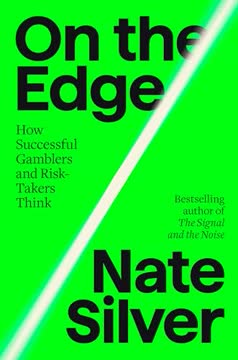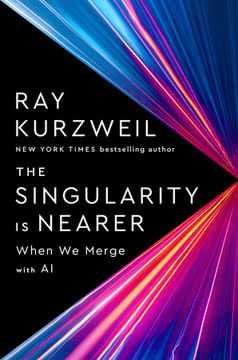نکات کلیدی
1. پیشرفت فناوری بهطور ذاتی برای همه مفید نیست
هیچ چیز خودبخود در مورد فناوریهای جدید که رفاه گستردهای به ارمغان میآورند، وجود ندارد.
نگاه تاریخی: در طول تاریخ، پیشرفتهای فناوری غالباً به نفع یک اقلیت کوچک بوده و نتوانستهاند زندگی اکثریت را بهبود بخشند. این الگو را میتوان از جوامع کشاورزی باستانی تا انقلاب صنعتی و فناوریهای دیجیتال مدرن مشاهده کرد.
نمونههای پیشرفت مغرضانه:
- نوآوریهای کشاورزی در قرون وسطی عمدتاً به نفع مالکان زمین و نهادهای مذهبی بود
- ماشینآلات صنعتی اولیه در صنعت نساجی، هنرمندان ماهر را از کار بیکار کرد
- فناوریهای مدرن هوش مصنوعی و اتوماسیون تهدیدی برای حذف مشاغل و افزایش نابرابری هستند
نویسندگان استدلال میکنند که جهت پیشرفت فناوری یک انتخاب است که توسط قدرتمندان شکل میگیرد و نه نیرویی اجتنابناپذیر برای خیر عمومی. این موضوع روایت رایج فناوری بهعنوان یک نیروی غیرقابل توقف و نیکوکار را به چالش میکشد.
2. دینامیکهای قدرت جهت پیشرفت فناوری را شکل میدهند
بینش قدرت است؛ قدرت بینش است.
قانعسازی و تعیین دستور کار: کسانی که دارای قدرت اجتماعی و اقتصادی هستند، تأثیر نامتناسبی بر جهت توسعه فناوری دارند. این تأثیر از طریق:
- توانایی تعیین دستور کار برای تحقیق و توسعه
- کنترل بر منابع و تأمین مالی
- شکلدهی به ادراک عمومی و گفتمان حول فناوری
نمونههای تاریخی:
- فردیناند دو لسهپس و پروژه کانال سوئز
- ظهور مالی بزرگ و تأثیر آن بر سیاستهای اقتصادی
- دیدگاه سیلیکون ولی درباره فناوریهای دیجیتال و هوش مصنوعی
نویسندگان تأکید میکنند که انتخابهای فناوری صرفاً بر اساس امکانات علمی تعیین نمیشوند، بلکه تحت تأثیر دیدگاهها و منافع قدرتمندان قرار دارند. این موضوع اهمیت صداهای متنوع و قدرتهای متقابل را در شکلدهی به آیندهای فراگیرتر از نظر فناوری برجسته میکند.
3. انقلاب صنعتی: شمشیری دو لبه برای کارگران
سیستم کارخانهای در نیمه دوم قرن هجدهم به سرعت در بریتانیا گسترش یافت. اگرچه آنها به سرعت به نصب پاناپتیکونها نپرداختند، بسیاری از کارفرمایان کار را مطابق با رویکرد کلی بنتام سازماندهی کردند.
آسیب اولیه به کارگران: مراحل اولیه صنعتیسازی در بریتانیا منجر به:
- ساعات کار طولانیتر و شرایط سختتر برای کارگران
- کار کودکان در شرایط خطرناک، بهویژه در معادن و کارخانهها
- آلودگی گسترده و بحرانهای بهداشتی عمومی در مناطق شهری شد
بهبودهای تدریجی: با گذشت زمان، نیروهای متقابل ظهور کردند:
- جنبشهای کارگری و اتحادیههای کارگری
- اصلاحات سیاسی که حقوق رأی را گسترش داد
- ابتکارات بهداشتی عمومی و مقررات
انقلاب صنعتی در ابتدا شرایط را برای بسیاری از کارگران بدتر کرد، اما همچنین زمینهساز بهبودهای نهایی در استانداردهای زندگی شد. این مثال تاریخی رابطه پیچیده بین تغییرات فناوری و پیشرفت اجتماعی را نشان میدهد.
4. دوران پس از جنگ جهانی دوم: دورهای کوتاه از رفاه مشترک
الگوی رشد بعدی حتی شگفتانگیزتر بود. دستمزدهای واقعی متوسط به سرعت و گاهی سریعتر از بهرهوری افزایش یافت و نرخ رشد کلی تقریباً 3 درصد بین سالهای 1949 و 1973 ثبت شد.
عوامل مؤثر در منافع مشترک:
- اتحادیههای کارگری قوی و مذاکره جمعی
- مقررات دولتی و شبکههای ایمنی اجتماعی
- فناوریهایی که بهرهوری کارگران را در سطوح مهارتی مختلف افزایش دادند
تأثیر جهانی: این مدل رفاه مشترک فراتر از ایالات متحده به بخشهای زیادی از اروپا و برخی از نقاط آسیا گسترش یافت و منجر به:
- افزایش استانداردهای زندگی طبقه متوسط
- کاهش نابرابری درآمد
- گسترش دسترسی به آموزش و بهداشت
نویسندگان این دوره را بهعنوان یک مثال نادر از پیشرفت فناوری که با پیشرفت اجتماعی گسترده همراستا بود، ارائه میدهند و بر اهمیت ترتیبات نهادی در شکلدهی به نتایج تأکید میکنند.
5. انقلاب دیجیتال و فرسایش منافع مشترک
فناوریهای دیجیتال به قبرستان رفاه مشترک تبدیل شدند.
تغییر در دینامیکهای قدرت: از دهه 1980، چندین عامل به معکوس شدن رفاه مشترک کمک کرد:
- تضعیف اتحادیههای کارگری
- مقرراتزدایی و مالیسازی اقتصاد
- تمرکز شرکتها بر ارزش سهامداران و کاهش هزینهها
تعصب فناوری: فناوریهای دیجیتال بهطور فزایندهای بهگونهای توسعه و بهکار گرفته شدند که:
- وظایفی را که قبلاً توسط کارگران انجام میشد، خودکار کردند
- تقاضا برای نیروی کار با مهارت بالا را افزایش دادند در حالی که فرصتهای کارگران کمسواد را کاهش دادند
- نظارت و کنترل بیشتری بر کارگران فراهم کردند
نویسندگان استدلال میکنند که این تغییرات پیامدهای اجتنابناپذیر فناوری دیجیتال نبودند، بلکه نتیجه انتخابهایی بودند که توسط قدرتمندان انجام شده و تحت تأثیر دیدگاه جدیدی از موفقیت شرکتی و پیشرفت فناوری قرار داشتند.
6. پتانسیل هوش مصنوعی برای تشدید نابرابری و تضعیف کارگران
توهم هوش مصنوعی.
محدودیتهای هوش مصنوعی کنونی: با وجود ادعاهای بزرگ، بسیاری از کاربردهای هوش مصنوعی منجر به:
- "خودکارسازی معمولی" با افزایش بهرهوری محدود
- جابجایی کارگران بدون ایجاد ارزش جدید قابل توجه
- افزایش نظارت و کنترل بر کارگران میشود
پیامدهای جهانی: مسیر کنونی توسعه هوش مصنوعی تهدیدی برای:
- گسترش شکاف بین اقتصادهای توسعهیافته و در حال توسعه
- ایجاد یک "جامعه دو لایه" با یک اقلیت بسیار ماهر و یک نیروی کار بزرگ و حاشیهنشین
- تضعیف نهادهای دموکراتیک از طریق جمعآوری و دستکاری دادهها
نویسندگان خوشبینی غالب درباره هوش مصنوعی را به چالش میکشند و استدلال میکنند که مسیر کنونی توسعه آن، خطر تشدید نابرابریها و عدم تعادلهای قدرت موجود را به همراه دارد.
7. هدایت فناوری به نفع انسان و پیشرفت مشترک
مفید بودن ماشین.
رویکرد جایگزین: نویسندگان پیشنهاد میکنند که به جای هوش مصنوعی (AI)، بر "مفید بودن ماشین" (MU) تمرکز کنیم:
- توسعه فناوریهایی که قابلیتهای انسانی را تکمیل و تقویت کنند
- ایجاد وظایف و فرصتهای جدید برای کارگران در سطوح مهارتی مختلف
- استفاده از ابزارهای دیجیتال برای ساخت پلتفرمهایی برای همکاری و توانمندسازی
نمونههای تاریخی MU:
- توسعه ماوس کامپیوتر و رابطهای کاربری گرافیکی
- وب جهانی بهعنوان ابزاری برای دسترسی به اطلاعات
- پلتفرمهای بانکداری موبایل در کشورهای در حال توسعه
تغییرات نهادی: هدایت فناوری به سمت پیشرفت مشترک نیازمند:
- تقویت نهادهای دموکراتیک و نمایندگی کارگران
- توسعه چارچوبهای جدید نظارتی برای فناوریهای دیجیتال
- سرمایهگذاری در آموزش و توسعه مهارتها برای آمادهسازی کارگران برای تغییرات فناوری
نویسندگان استدلال میکنند که با تغییر تمرکز از هوش مصنوعی به مفید بودن ماشین و بازسازی نهادهایی که از رفاه مشترک حمایت میکنند، میتوانیم پتانسیل فناوریهای دیجیتال را به نفع همه به کار بگیریم.
آخرین بهروزرسانی::
FAQ
What's Power and Progress about?
- Exploration of Technology's Impact: The book examines the historical relationship between technology and prosperity, focusing on how technological advancements have shaped society over the last thousand years.
- Struggle Over Technology: It discusses the ongoing struggle between powerful elites and the general populace regarding the direction and benefits of technological progress.
- Call for Inclusivity: The authors advocate for a more inclusive vision of technology that prioritizes the needs of all people, not just a privileged few.
Why should I read Power and Progress?
- Understanding Current Issues: The book provides insights into contemporary technological challenges, including automation and artificial intelligence, and their implications for inequality and democracy.
- Historical Context: It offers a comprehensive historical perspective, linking past technological revolutions to current challenges, making it easier to understand today's issues.
- Actionable Solutions: The authors propose specific policy recommendations to redirect technology towards more equitable outcomes, encouraging readers to think critically about the future.
What are the key takeaways of Power and Progress?
- Technology is Not Neutral: The authors emphasize that technology is shaped by the interests and visions of those in power, which can lead to unequal outcomes.
- Need for Countervailing Forces: The book argues for the importance of diverse voices and democratic institutions to challenge dominant visions and ensure equitable benefits from technological advancements.
- Historical Patterns Repeat: The authors illustrate that historical patterns of exploitation and inequality often resurface with new technologies, highlighting the need for vigilance and advocacy.
What are the best quotes from Power and Progress and what do they mean?
- “Progress is never automatic.”: This quote underscores the central thesis that technological advancements do not guarantee improvements in living standards for all; they require active societal choices.
- “Technology favors tyranny.”: This statement warns that without proper oversight, technological advancements can be used to control and surveil populations, leading to authoritarianism.
- “We must stop being mesmerized by tech billionaires.”: This quote calls for critical scrutiny of the narratives promoted by powerful tech leaders, advocating for a more democratic approach to technology governance.
How does Power and Progress address the role of elites in technological advancement?
- Elites Shape Technology: The book argues that technological choices are often made by a narrow elite, whose interests dictate the direction of innovation and its benefits.
- Historical Examples: The authors cite examples from medieval England and the American South, where technological advancements led to greater exploitation of the working class.
- Need for Inclusivity: The authors advocate for a shift in power dynamics to ensure that technological advancements benefit a broader segment of society.
What is the "productivity bandwagon" in Power and Progress?
- Definition of the Concept: The productivity bandwagon refers to the idea that technological advancements lead to increased productivity, which should, in theory, raise wages and improve living standards for all workers.
- Historical Evidence: The authors provide historical examples where this bandwagon failed to materialize, particularly in the context of the Industrial Revolution and modern digital technologies.
- Implications for Workers: The concept illustrates that without strong labor rights and countervailing power, productivity gains can disproportionately benefit owners and investors rather than workers.
How does Power and Progress define "so-so automation"?
- Limited Productivity Gains: "So-so automation" refers to technological advancements that automate tasks but do not significantly enhance productivity or efficiency.
- Worker Displacement: This type of automation often leads to job losses without creating new opportunities, negatively impacting workers and contributing to inequality.
- Need for Balance: The authors argue that a focus on more beneficial technologies that complement human labor is essential to avoid the pitfalls of so-so automation.
How does Power and Progress relate to current technological trends like AI?
- AI and Inequality: The authors argue that current trends in artificial intelligence are exacerbating existing inequalities, as the benefits of AI are often concentrated among a small elite.
- Call for Ethical AI: They advocate for a more ethical approach to AI development that considers the social implications and seeks to benefit all members of society.
- Historical Lessons: The book draws parallels between past technological advancements and current trends, emphasizing the need for vigilance to ensure that history does not repeat itself.
How do the authors propose to redirect technology for the common good?
- Building Countervailing Powers: The authors suggest that creating organizations and movements that represent the interests of workers and marginalized groups is essential for redirecting technology.
- Inclusive Decision-Making: They emphasize the importance of including diverse voices in discussions about technological development to ensure that all perspectives are considered.
- Policy Recommendations: The book outlines potential policy changes and regulatory frameworks that could help align technological advancements with societal needs.
What role does democracy play in the arguments of Power and Progress?
- Democracy as a Counterbalance: The authors argue that democratic institutions are crucial for ensuring that diverse voices are heard and that technology serves the common good.
- Historical Context: They highlight historical moments when democratic movements led to significant changes in how technology was applied and who benefited from it.
- Future Implications: The book warns that without strong democratic institutions, the risks of technological exploitation and inequality will increase, underscoring the need for active civic engagement.
How does Power and Progress address the impact of AI on democracy?
- Surveillance Concerns: The authors discuss how AI technologies can be used for surveillance and control, posing a threat to democratic freedoms and civil liberties.
- Misinformation and Polarization: They highlight the role of social media algorithms in spreading misinformation and polarizing public discourse, undermining democratic processes.
- Call for Regulation: The book advocates for regulatory measures to ensure that AI serves democratic values rather than eroding them.
How does Acemoğlu propose we navigate the future of technology?
- Advocacy for Worker Empowerment: Acemoğlu argues for policies that empower workers and ensure that technological advancements benefit the broader population rather than a select few.
- Importance of Political Representation: He emphasizes the need for strong labor movements and political representation to advocate for equitable distribution of the gains from technology.
- Vision for Inclusive Growth: The book calls for a reimagining of technological progress that prioritizes human welfare and social equity, rather than solely focusing on profit maximization.
نقد و بررسی
کتاب قدرت و پیشرفت نقدهای متفاوتی دریافت کرده است. بسیاری تحلیل تاریخی جامع آن از تأثیر فناوری بر جامعه و ایدههای تحریککنندهاش درباره هوش مصنوعی را تحسین میکنند. منتقدان معتقدند که کتاب بیش از حد طولانی و تکراری است. خوانندگان به چالش کشیدن خوشبینی فناوری را میپسندند اما پیشنهادات سیاستی را ناکافی میدانند. برخی آن را اثری مهم درباره نابرابری و پیشرفت میدانند، در حالی که دیگران آن را غیر اصیل میبینند. تز مرکزی کتاب—اینکه منافع فناوری بهطور خودکار به همه گسترش نمییابد—با بسیاری همصدا میشود، هرچند اجرای آن نظرات را تقسیم میکند.
Similar Books
















